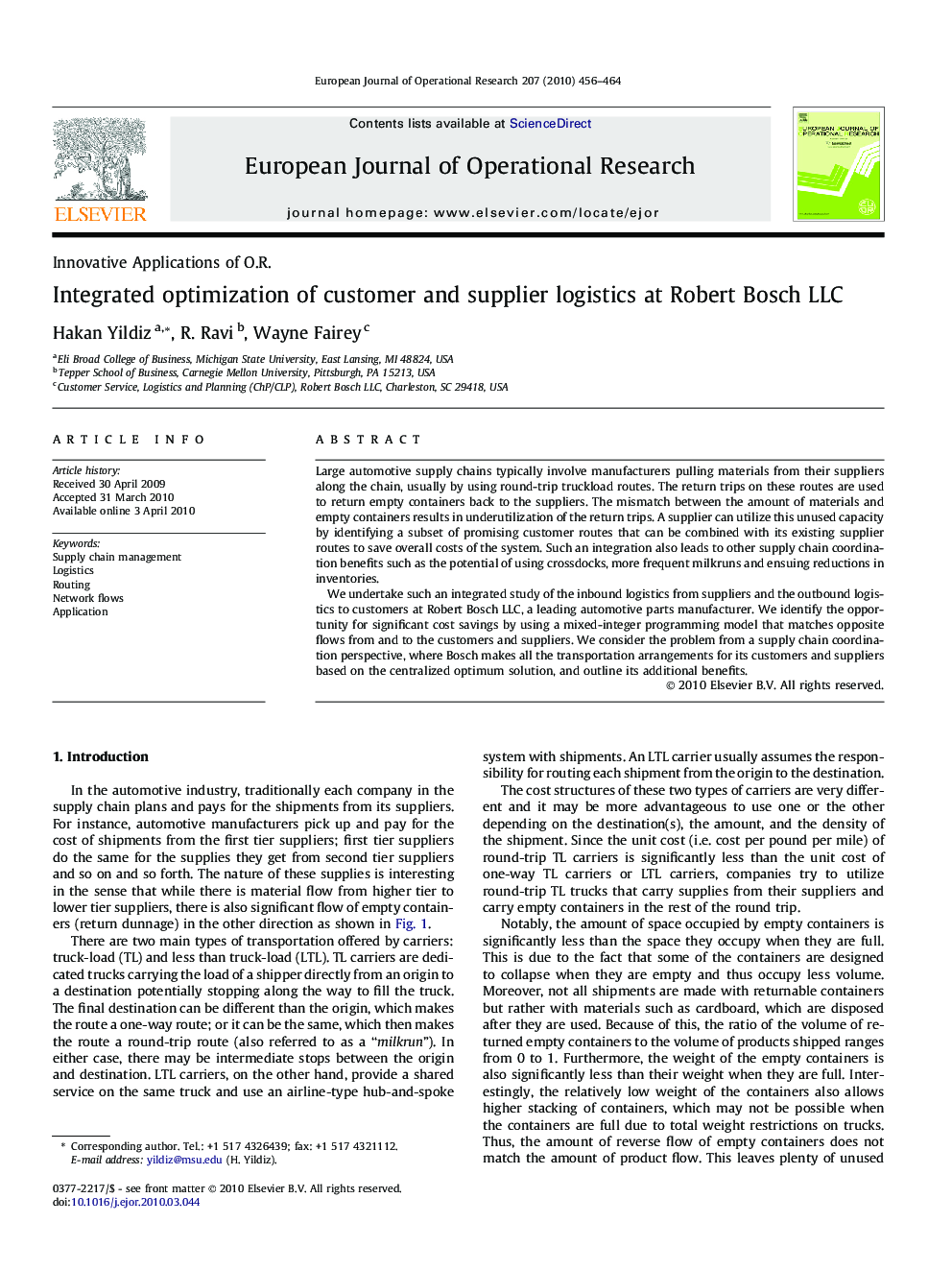| Article ID | Journal | Published Year | Pages | File Type |
|---|---|---|---|---|
| 481103 | European Journal of Operational Research | 2010 | 9 Pages |
Large automotive supply chains typically involve manufacturers pulling materials from their suppliers along the chain, usually by using round-trip truckload routes. The return trips on these routes are used to return empty containers back to the suppliers. The mismatch between the amount of materials and empty containers results in underutilization of the return trips. A supplier can utilize this unused capacity by identifying a subset of promising customer routes that can be combined with its existing supplier routes to save overall costs of the system. Such an integration also leads to other supply chain coordination benefits such as the potential of using crossdocks, more frequent milkruns and ensuing reductions in inventories.We undertake such an integrated study of the inbound logistics from suppliers and the outbound logistics to customers at Robert Bosch LLC, a leading automotive parts manufacturer. We identify the opportunity for significant cost savings by using a mixed-integer programming model that matches opposite flows from and to the customers and suppliers. We consider the problem from a supply chain coordination perspective, where Bosch makes all the transportation arrangements for its customers and suppliers based on the centralized optimum solution, and outline its additional benefits.
